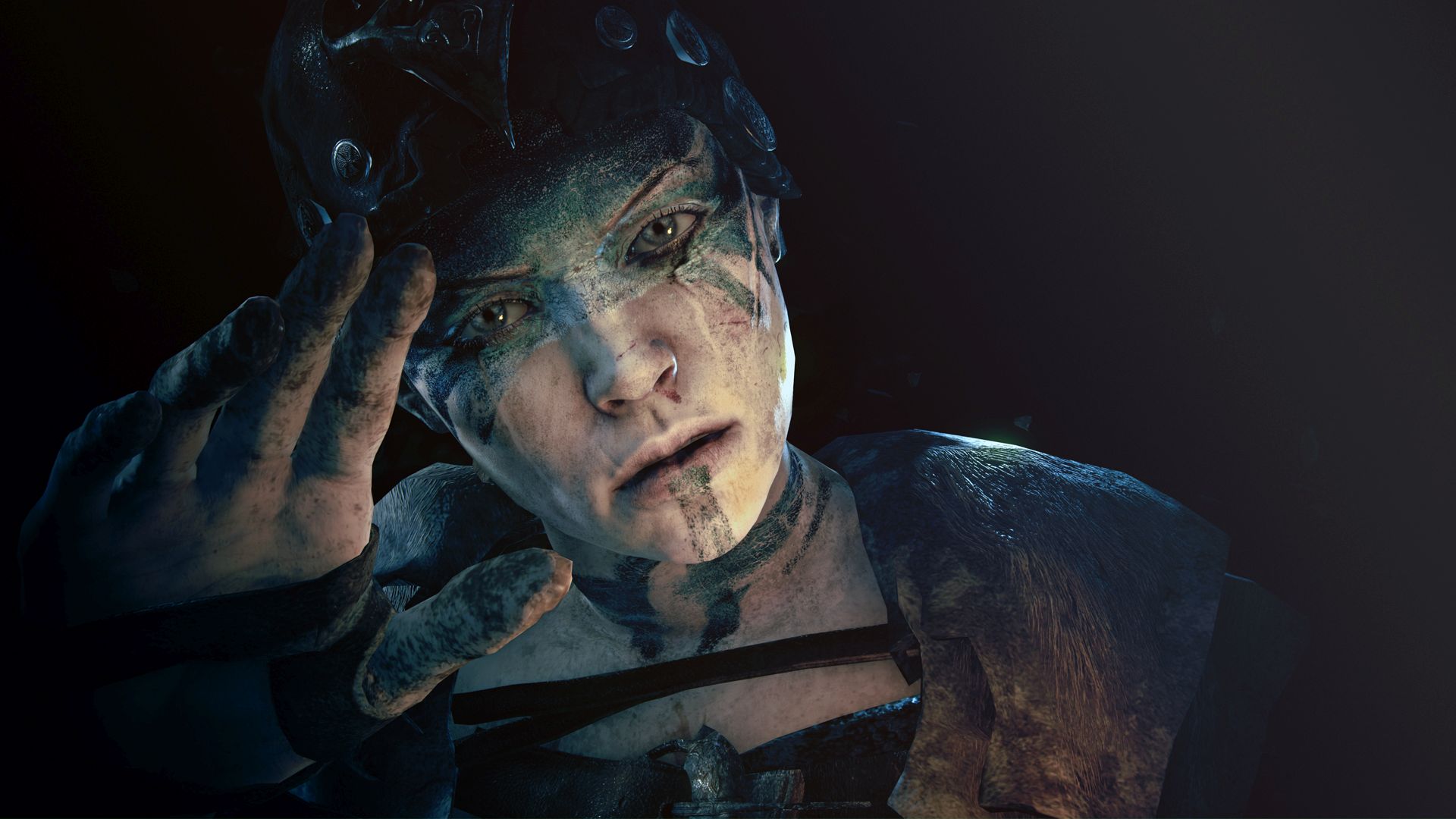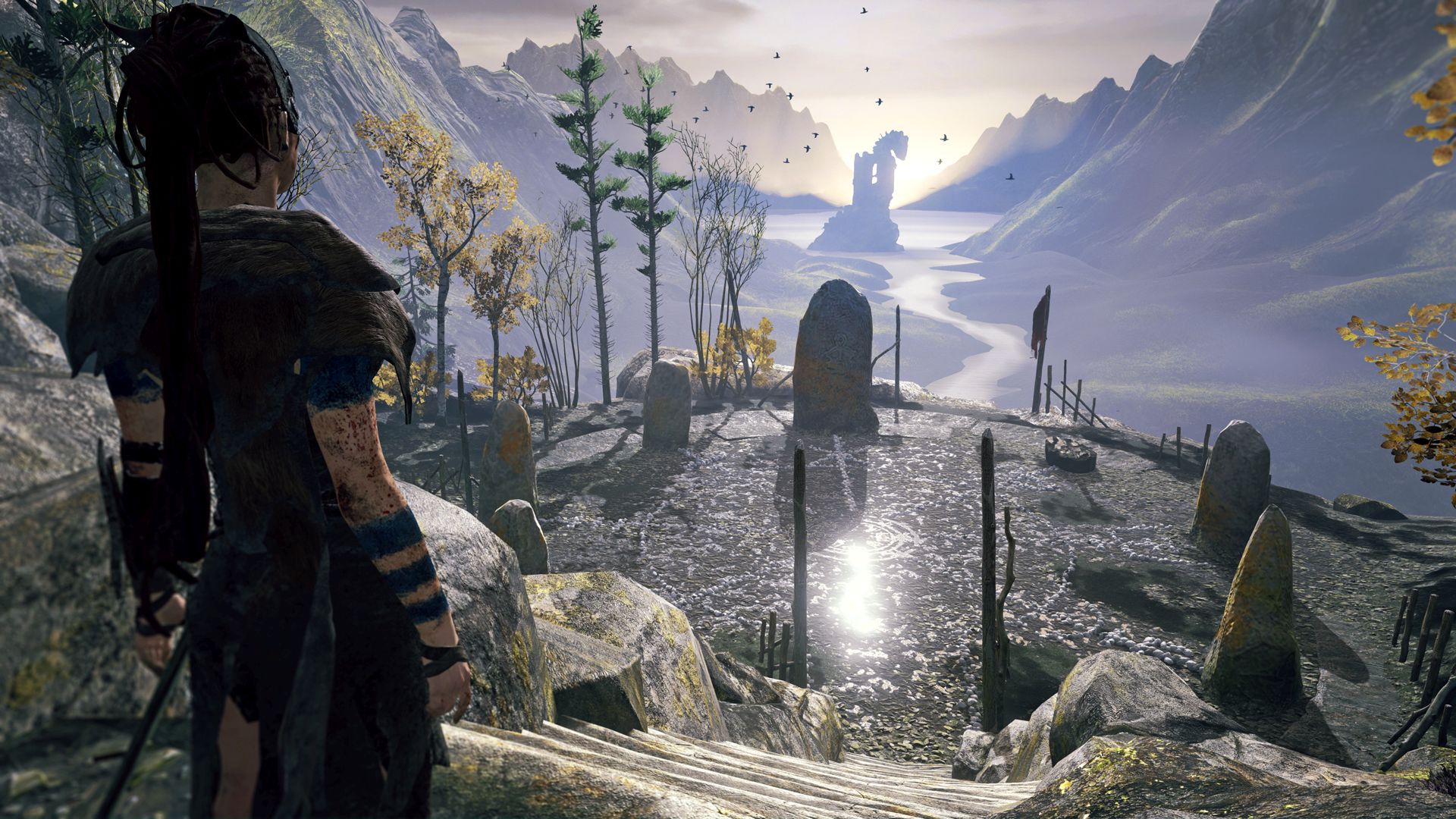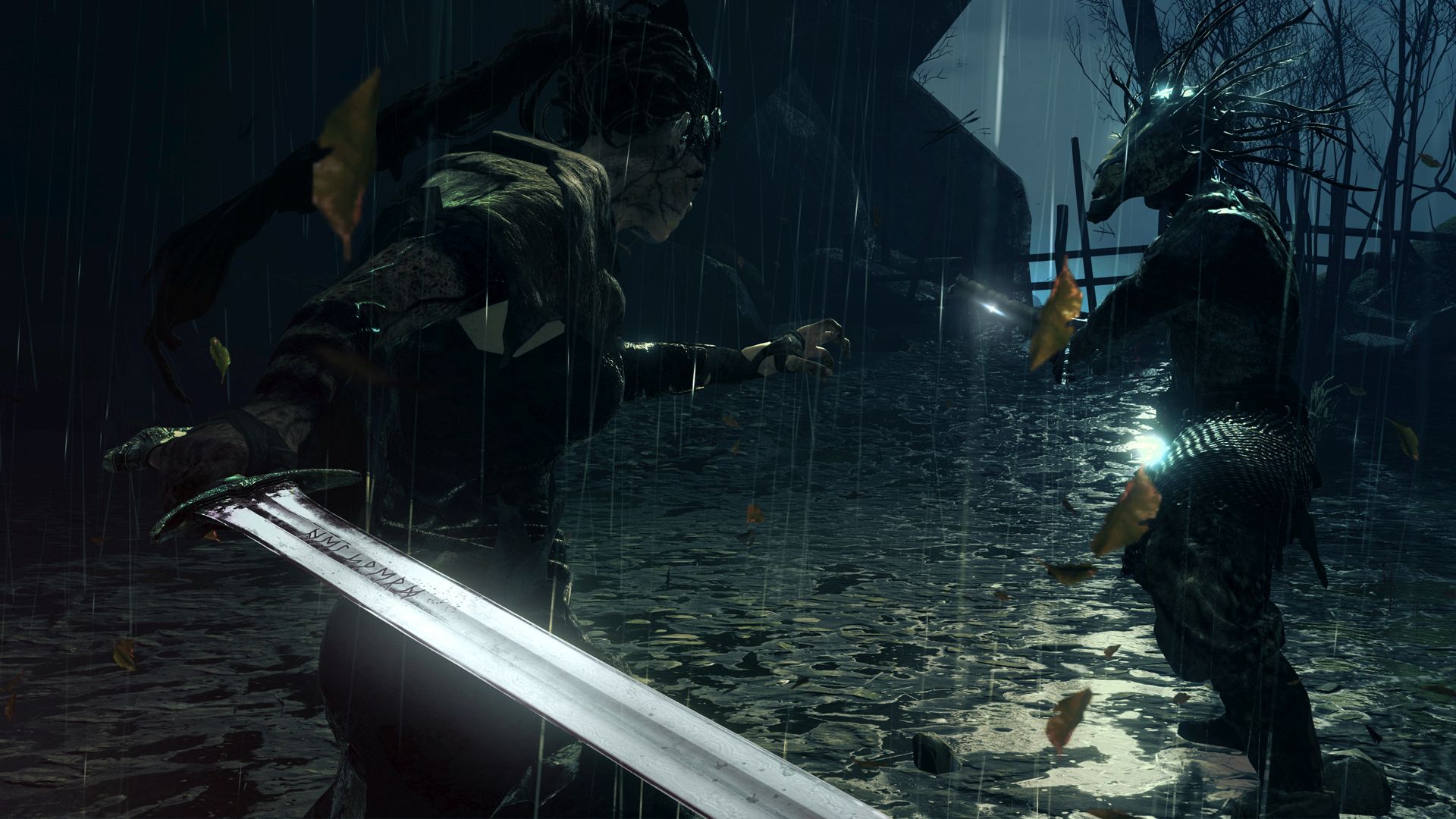Descending into uncharted territory in Hellblade

I wasn't expecting to be surprised by Hellblade. After all, Ninja Theory's first outing as an indie studio appears to adhere to a familiar pattern. You play a lone warrior, here a Celt called Senua, in a third person action game with heavy narrative leanings. Senua experiences hell as a corruption of the world around her, a little like Dante's sojourns into limbo in DmC. Even the name recalls Ninja Theory's first game, the PlayStation-bound Heavenly Sword. I came to Hellblade expecting slick multi-man melees, combo meters, and probably a mo-capped Andy Serkis.
That's not what I found. The demo I played opened in a dark forest during a storm, as Senua shivered and argued with the voices in her head. One is younger, female, and possibly representative of Senua in her youth. The other is male, stern and older, possibly Andy Serkis and—more importantly—representative of her fear and self-doubt. Haunted anti-heroes are far from unprecedented, but what struck me was the matter-of-fact way in which this device is presented. No magic or imagined ghosts, just a cold-looking woman alone in the mud, fighting with herself.
This is deliberate. Senua's hell is not literal or mythological, but personal. In modern psychological terms, she would be considered schizophrenic. Ninja Theory are working with Professor Paul Fletcher, an expert in health neuroscience at the University of Cambridge, on a creative depiction of mental illness that is nonetheless sympathetic to the reality of the condition. Senua doesn't live in an age of modern medicine, however, and as such her experience of her illness is coloured by the superstition and folklore of her time. She sees shapes in the trees and believes herself to be descending into hell. The weather shifts with her mood; the enemies she perceives are exaggerated and may not even be real.

Accompanied by a flash of lightning, a painted swordsman with a knotted crown strides forward. The camera locks to a close third-person, right over Senua's shoulder, and we fight. There's no user interface at all, and the narrow view contributes to the sense of being trapped.
Combat involves chaining light and heavy attacks with blocks and three dimensional movement, but there's no jumping or acrobatics. While not a pure simulation of swordfighting, it feels far more earthy and grounded than Ninja Theory's previous work. One-on-one fighting like this will be the norm for the game, and there will be no weapons to unlock or skill points to invest in new combos. Every tool at Senua's disposal is available to you from the start.
Split-second directional blocks can be used to open up enemies.
I muddle my way through my first fight, but I can see how it could be played with far more finesse. Split-second directional blocks can be used to open up enemies to punishing counter-attacks, and there's a satisfaction to breaking through an opponent's guard and landing the blow that drops them.
As the demo progresses, Senua emerges into the middle of a stone circle on a lakeside. It's a beautiful view, with low sun picking out the edges of the stones, shimmering off the water and highlighting a tower in the distance which is capped with something shaped like a horse's head. Using a heightened vision mode, Senua can focus on certain objects—highlighted in gold—which result in further visual and auditory hallucinations.
The biggest gaming news, reviews and hardware deals
Keep up to date with the most important stories and the best deals, as picked by the PC Gamer team.

Effectively, this is an object-finding game—Batman's detective mode would be another example. Normally I'm not a fan of interludes like this, but Hellblade makes it work. In part this is down to the quality of the writing and the performance, but it's also because the system fits well with the themes of the game. There are links between epilepsy, psychosis and apophenia—pattern-finding, essentially—and this frames Senua's experience in a very different context. There's a later puzzle where you shift Senua's perspective until a tangle of branches resolves into the shape of a woman's face, who then speaks to her and beckons her deeper into the forest. This isn't powerful moment because it's magic: it's a powerful moment because it's not.
I'm reminded of a game I didn't expect to crop up in this context: Dear Esther. The world Hellblade presents is symbolic in some of the same ways and attempts a similar sense of pathos. The sword fighting will mark it out, of course, but the fact that the comparison can be made at all highlights just how much of a departure this game is. This short slice of the game represents the beginning of a long road for Ninja Theory, who are—for the first time—making a game without any publisher assistance. Yet it also demonstrates the ambitious creative territory that freedom lets them strike out into, and I'm glad that they're taking this opportunity to do so.
Joining in 2011, Chris made his start with PC Gamer turning beautiful trees into magazines, first as a writer and later as deputy editor. Once PCG's reluctant MMO champion , his discovery of Dota 2 in 2012 led him to much darker, stranger places. In 2015, Chris became the editor of PC Gamer Pro, overseeing our online coverage of competitive gaming and esports. He left in 2017, and can be now found making games and recording the Crate & Crowbar podcast.


